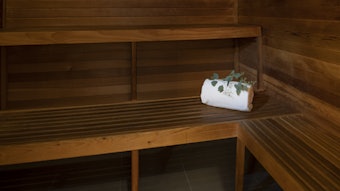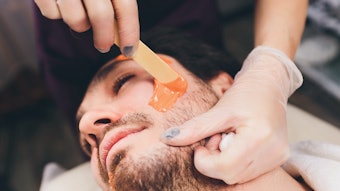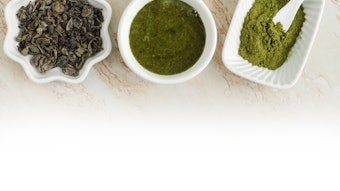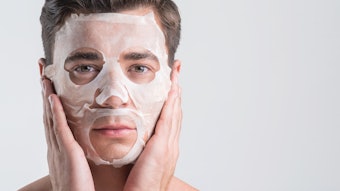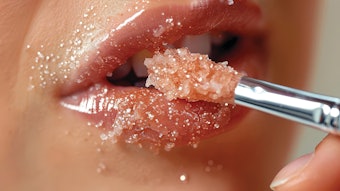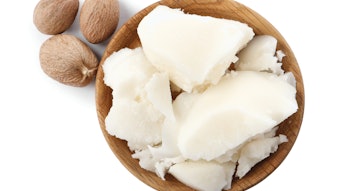In the specialty skin care segment—products targeting acne, scars, stretch marks and cellulite—the line between cosmetics and pharmaceutical formulation is becoming increasingly blurred. Advanced ingredients and delivery systems for skin care products provide better results for niche skin issues and offer more marketing claims than previously possible. “Applications for specialty skin care are getting closer to applications that, in the past, were dominated by prescription treatments,” says Jochen Klock, PhD, head market development hair care, DSM Nutritional Products Ltd. Branch Pentapharm, who also believes the segment will soon be marked by differentiation.
According to Pamela de Ryss, vice president, national accounts, Murad, Inc., “Antiaging skin care products continue to be a significant presence in terms of shelf space.” While she doesn’t see much of a shift of real estate to or from the segment, to compete for shelf space, new specialty formulations targeting specific age groups and skin types are offering additional claims, such as dual sun protection and antiaging benefits.
However, while antiaging-focused products may seem to hog some retail shelf space, in many instances, brands such as Murad have launched specialty skin care lines for acne, cellulite, antiaging and redness to complement antiaging SKUs and boost overall sales. In addition, many brands are selling dietary supplements for specialty skin issues to complement topical selections.
“The growing antiaging segment seems to have expanded our clients’ need for additional products to complement their antiaging offering,” says Roger Martin, vice president of sales and marketing, Harmony Labs—a contract manufacturer. “Prestige skin care treatments for acne, scars and cellulite are seeing strong growth, possibly because they are riding on the back of the antiaging growth wave. Historically, consumers have asked our clients for products that treat problems, but the trend is moving toward offering products that may prevent the symptoms or disease states from occurring in the first place.”
“Body products are trending toward higher concentrations and more specialized delivery systems, making them better than ever before,” says dermatologist Dennis Gross, MD, creator of MD Skincare. “I predict that treatments for the body will soon be on par with those for the face.”
Internal Skin Care
Jeff Murad, vice president of product development, Murad, Inc., believes ingested treatments are the most effective in dealing with specialty skin concerns. “Many skin concerns involve the dermis—the deeper part of the skin that topical creams can’t always reach. By supplementing the diet with specially targeted ingredients that enable the body to build collagen and elastin, infuse the skin’s cells with water, normalize the production of new skin cells and increase circulation, we can help the body to resolve these specialty skin care issues,” he says. “In short, with internal skin care, we can restore and enhance the appearance and health of the skin all the way down to its deepest layers.”
In addition to Murad’s topical treatments for specialty skin issues, the brand’s daily Firm and Tone Dietary Supplements are formulated to work on a cellular level. “More and more of an internal approach is being incorporated into the treatment programs for cellulite and stretch marks,” says Tracey Sameyah, global general manager, professional division, Murad, Inc.
“In an eight-week course of treatment, this results in an improvement in the skin’s firmness by up to 78%, and up to a 47% improvement in texture. Targeted supplements are an area of the industry poised for tremendous growth.”
“The whole internal skin care concept has expanded enormously during the past several years,” says Howard Murad, MD, and CEO and founder, Murad Inc. “There are enormous benefits in taking supplements for managing skin disorders. I believe that supplements have been and will continue to be very helpful for people with acne and other skin conditions, such as cellulite, rosacea, eczema, wrinkles and sun damage.”
Specialty Sun Care
For consumers treating specialty skin issues with traditional topical creams, sun protection as a dual marketing claim is growing in popularity. In April 2008, Merz Pharmaceuticals—the U.S. subsidiary of Germany-based Merz & Co. KgaA—introduced Mederma Cream plus SPF 30 to treat scar tissue and protect the skin from sun damage and discoloration.
“Dermatologists and other physicians routinely recommend that new scars be protected from the sun, because they are especially susceptible to damage and discoloration,” says Jessica Wright, senior brand manager, Mederma. “The increase in the number of diagnosed skin cancer cases has had an impact on the everyday use of SPF and its importance in various products—not just sunscreen for beach days.”
With Mederma’s formulas and marketing in line with consumer demand, the franchise has expanded its market share and secured a 60% sales increase since 2007, despite the current economic climate.
Though sun protection remains a steady market segment across the globe, perspectives on specialty skin care are not universal. According to Jean Runel, vice president, international, Murad, Inc., while consumers in the U.S. and in Europe may have similar buying habits in this segment, “In Latin America, more skin is shown, so there is an emphasis on products to maintain skin all over, such as anticellulite and stretch mark products.”
Abolishing Acne
Clogged pores can lead to acne in teens and adults, and is another major area of focus in the specialty skin care segment. “The real advancement in acne products has come from focusing more on skin health and inflammation than on just killing bacteria,” says Howard Murad.
For MD Skincare’s Gross, daily exfoliation for skin cell renewal is one of the key components of battling acne. “Adding a little oomph to a daily regimen by using a microexfoliation product with alpha or beta hydroxy acids builds skin-firming collagen, especially when incorporated into a two-step chemical peel,” he says. “Although primarily an antiaging product, it’s extremely successful in fighting breakouts and acne.”
Throughout the past few decades, anti-acne products have also benefitted from smarter delivery systems and ingredients, expanding from simple formulas that primarily rely on benzoyl peroxide or salicylic acid.
According to Klock of DSM Nutritional Products Ltd. Branch Pentapharm, ingredients such as the company’s Stay-C50 are among these advancements. “Stay-C50, a stable vitamin C derivative, reduces the appearance of acne by directly inhibiting the growth of Propionibacterium acne and—being a free radical scavenger—it also reduces the oxidation of sebum,” says Klock.
Harmony Labs offers similar ingredients, including encapsulated offerings for controlled release, but its best sellers for acne care, according to its vice president of sales and marketing, remain benzoyl peroxide and salicylic acid.
“These two ingredients are the gold standard for acne treatment,” Martin says, “because they work and work well.” Therefore, the company utilizes these ingredients as platforms for advanced formulas; its Fruit Enzyme Complex One, for example, is a specially formulated fruit complex that includes these acids for acne care.
“We continue to see acne as a primary concern for female consumers,” Martin adds. “However, women desire products that can treat the primary issue, such as scarring while also offering additional benefits such as sun protection or general moisturizing. We are finding more clients are requesting us to formulate products that can meet two or three consumer needs.”
While acne and scar treatment remains in the forefront of specialty skin formulas, stretch marks and cellulite concerns aren’t far behind in this particular segment.
Stretch Marks and Cellulite
“During pregnancy, skin distends to accommodate the development of the baby and maternal weight gain,” says Gina Daines, marketing director, Klein-Becker USA. “The results are unsightly stretch marks.”
To address stretch marks, brands offer topical creams to restore skin elasticity and the integrity of the connective tissue, and treat the skin discoloration often associated with stretch marks. Suppliers such as DSM Nutritional Products Ltd. Branch Pentapharm continue to expand ingredient and formula offerings and technologies that specifically target these concerns.
Sederma, for example, offers Dynalift, a patent-pending formula that forms a film on the surface of the skin for a tightening effect. And the company’s Regestril ingredient is designed to prevent stretch marks by slowing down cellular degradation.
Cellulite, another skin issue caused by the loss of skin elasticity and firmness, is also receiving more attention from beauty brands and suppliers. DSM Nutritional Products has developed Omega-6 flower seed oil, rich in gamma linolenic acid, to improve both skin’s elasticity and firmness. More common ingredients in products targeting cellulite, such as caffeine and retinol, can also be found in many brand formulas.
“Caffeine helps in reducing the size and thickness of the fat cell by dehydrating it and causing it to shrink so the skin will appear smoother and flatter,” says Marnie Massie, CEO of Treat Inc. “Retinol has been shown to thicken and plump the surface layers of the skin, helping to reduce the ‘orange peel’ or dimpled appearance of cellulite.”
Murad’s Sameyah believes consumers are seeking fewer quick fixes for specialty skin issues, and are opting for long-term, manageable results. “By taking care of clients needs in an inclusive manor, we can get maximum results,” she says. “Educating the client on the correct professional services and putting the clients on the correct topical and internal home care regimen will deliver dramatic results that can be managed and maintained for life.”

